American Marten Habitat and Den Sites
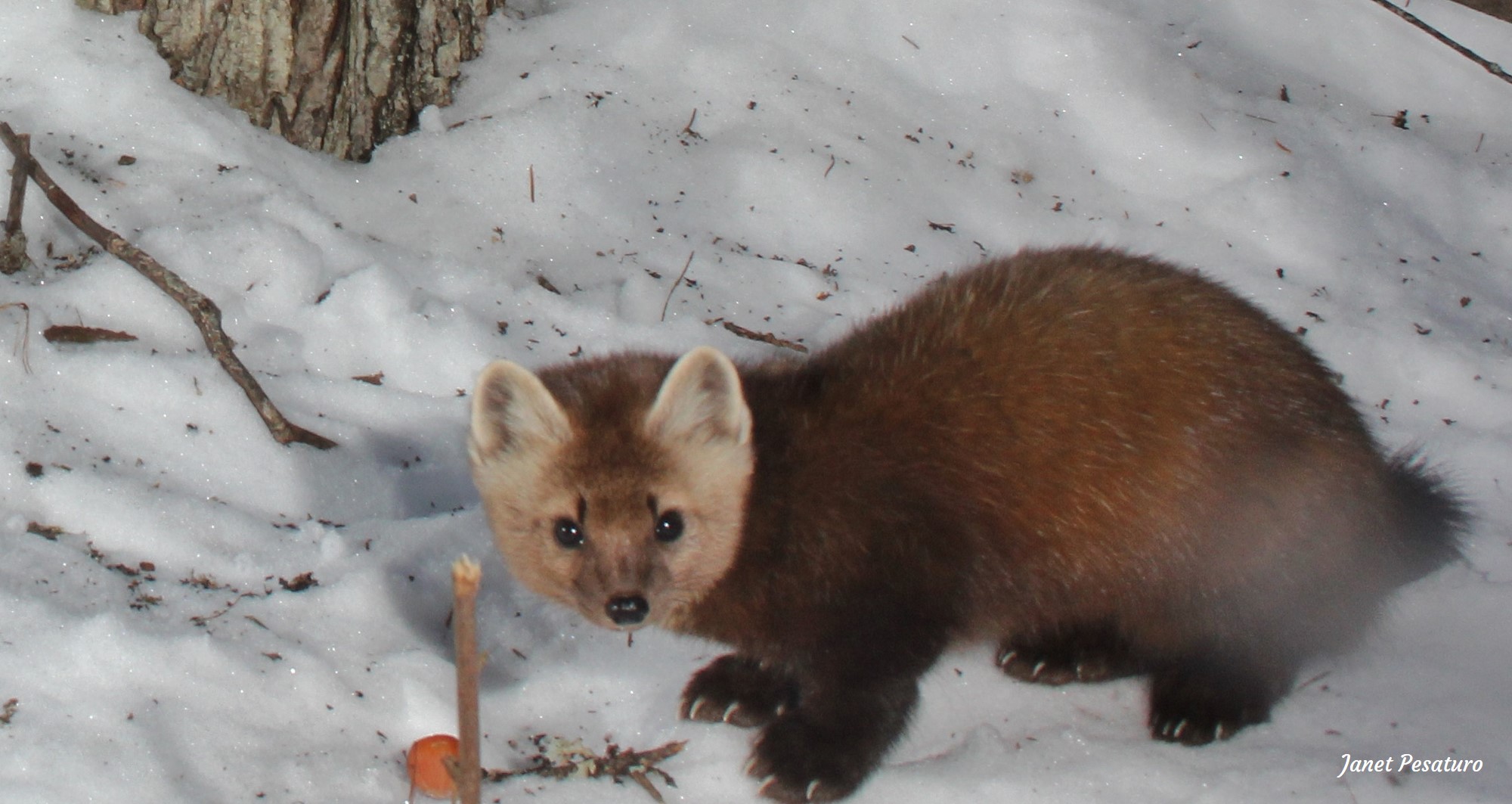
When you want to track an animal, it helps a lot to understand its habitat needs so you will know where to look for its tracks and sign. Some species, like raccoons, are true generalists and can be found almost anywhere, but others have much more specific requirements. While Martes americana has some generalist characteristics (its diet, for example), there are some specific features of preferred American marten habitat and den sites and understanding them will help you target your search.
Marten habitat
Martens are forest dwelling creatures of northern and high elevation forests which get deep snow in winter. Having tracked martens in New York, Wyoming, and Minnesota, I have found this species to be quite predictable. It is highly attracted to forest patches with old growth characteristics. Notice I said “old growth characteristics” and not “old growth forest”. That is because the marten does not require primeval forest, but it does prefer some of the features that typify old growth forest: an abundance of fallen branches, big logs, tipped trees, and large diameter dead and dying cavity trees. Such places support an abundance of small prey, and also provide shelter for resting and breeding. Notice also that I didn’t say that martens are found only in such places, but they do prefer them.
My first experience tracking martens was in the High Peaks region of the Adirondack Mountains of NY where there were pockets of simpler, younger forest interspersed with patches of complex, messy forest with lots of coarse woody debris and big, old dying trees. It didn’t take long to notice that martens were predictably present in the messy old patches and usually not present in the simple young patches. The photo below is a perfect example of marten habitat in the Adirondacks. The logs in the foreground were about 18-24 inches in diameter, and the large standing tree at right was a cavity ridden snag. In winter, a web of marten trails coursed over, under, and along the logs, winding through the forest from the base of one large tree to another.
One other thing to notice in the photo below is that the forest patch was predominately deciduous. Martens don’t seem to care if the forest is composed mainly of hardwoods or softwoods, as long as the there are plenty of large logs and cavity trees. In other words, the forest structure is more important than the tree species composition. This is one reason I don’t call the American marten a “pine marten” (a name more often used for the European marten, Martes martes).
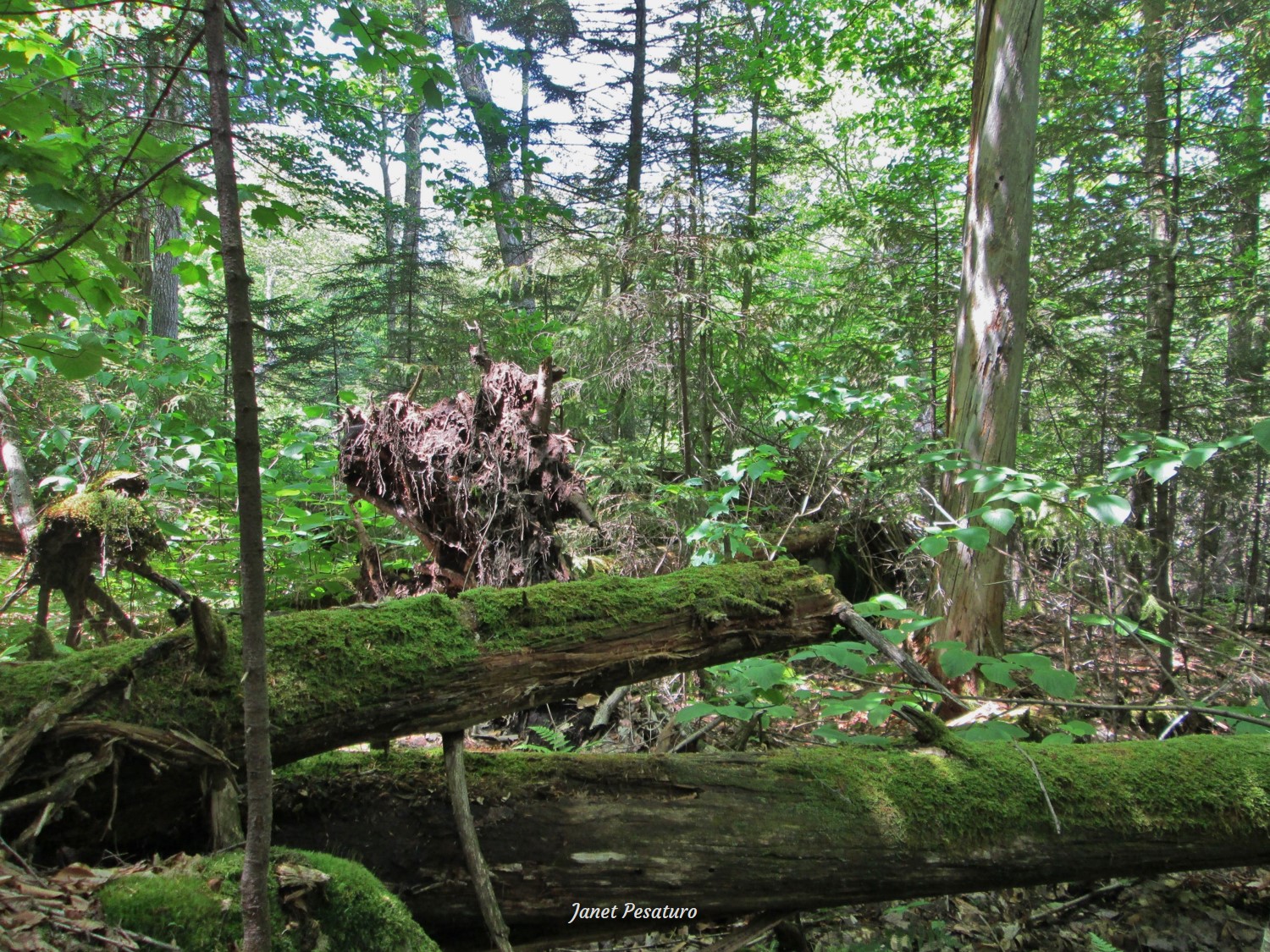
Below is another example of a marten hot spot within the Adirondacks High Peaks region. Notice that while there are a lot of small, young trees, there are a few large ones, and plenty of coarse woody debris on the forest floor. The leaning tree at center was a cavity ridden snag.

Next is a picture of a forest patch in Wyoming where marten sign was abundant. Once again, notice the abundance of large logs.
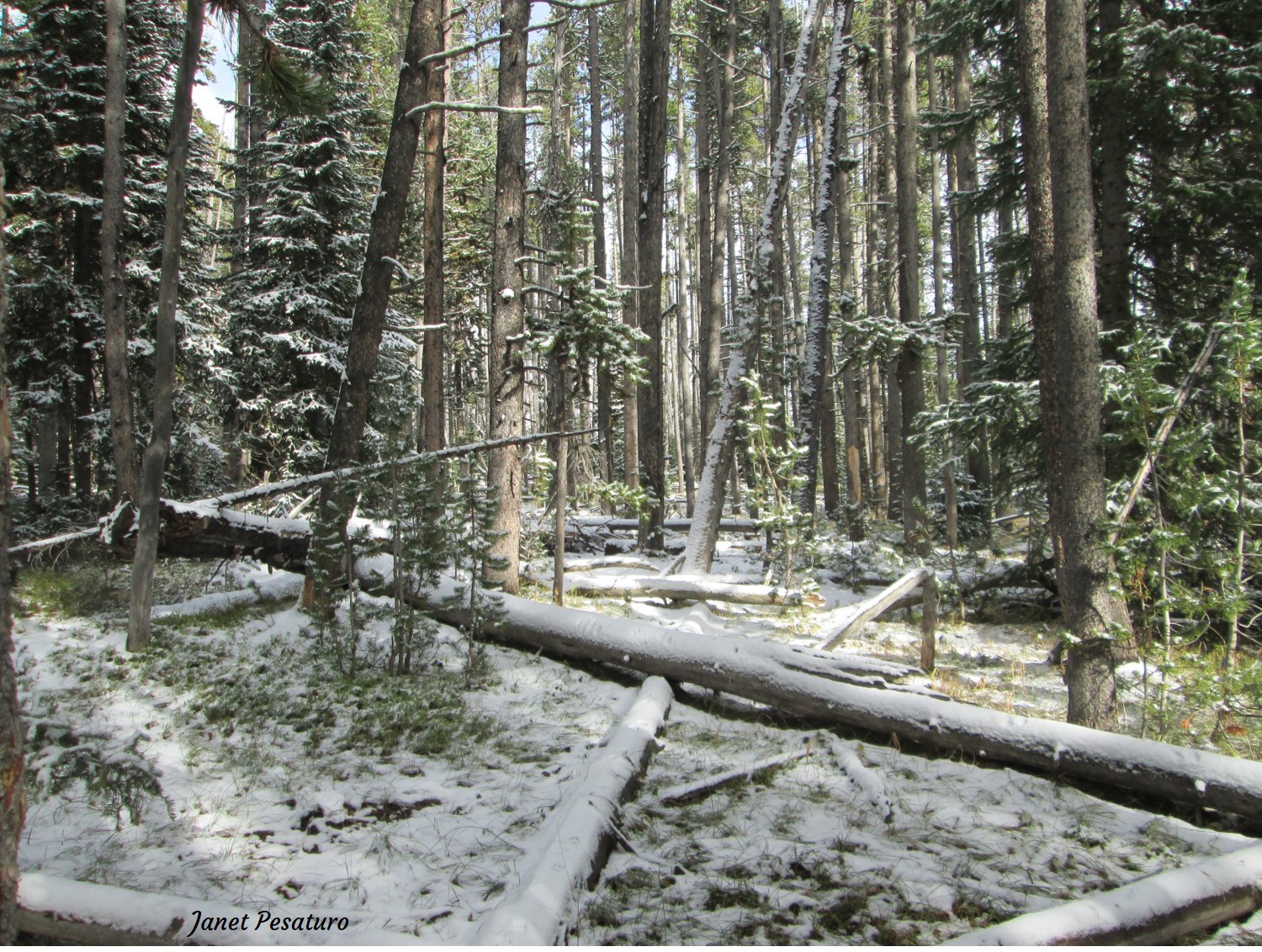
Winter Dens
As I mentioned, forests with old growth structure provide martens with places for resting and denning. Winter resting dens tend to be at ground level: under logs, root masses, brush piles and rock jumbles, and it is easy to find these while snow tracking. Look for marten trails radiating out from such habitat elements. Winter dens make excellent camera trap targets, by the way, but some rest sites are used only once, so be sure to look for evidence of repeated use. One piece of evidence might be a latrine outside the den — I have read that martens create scat accumulations near well used dens, but I have never seen that. Instead, I look for marten trails of different ages going to and from the den. Pictured below is s trail camera photo of a marten popping out from its den under a tipped tree in the Adirondacks. There were indeed multiple trails going to and fro, but there was no latrine.
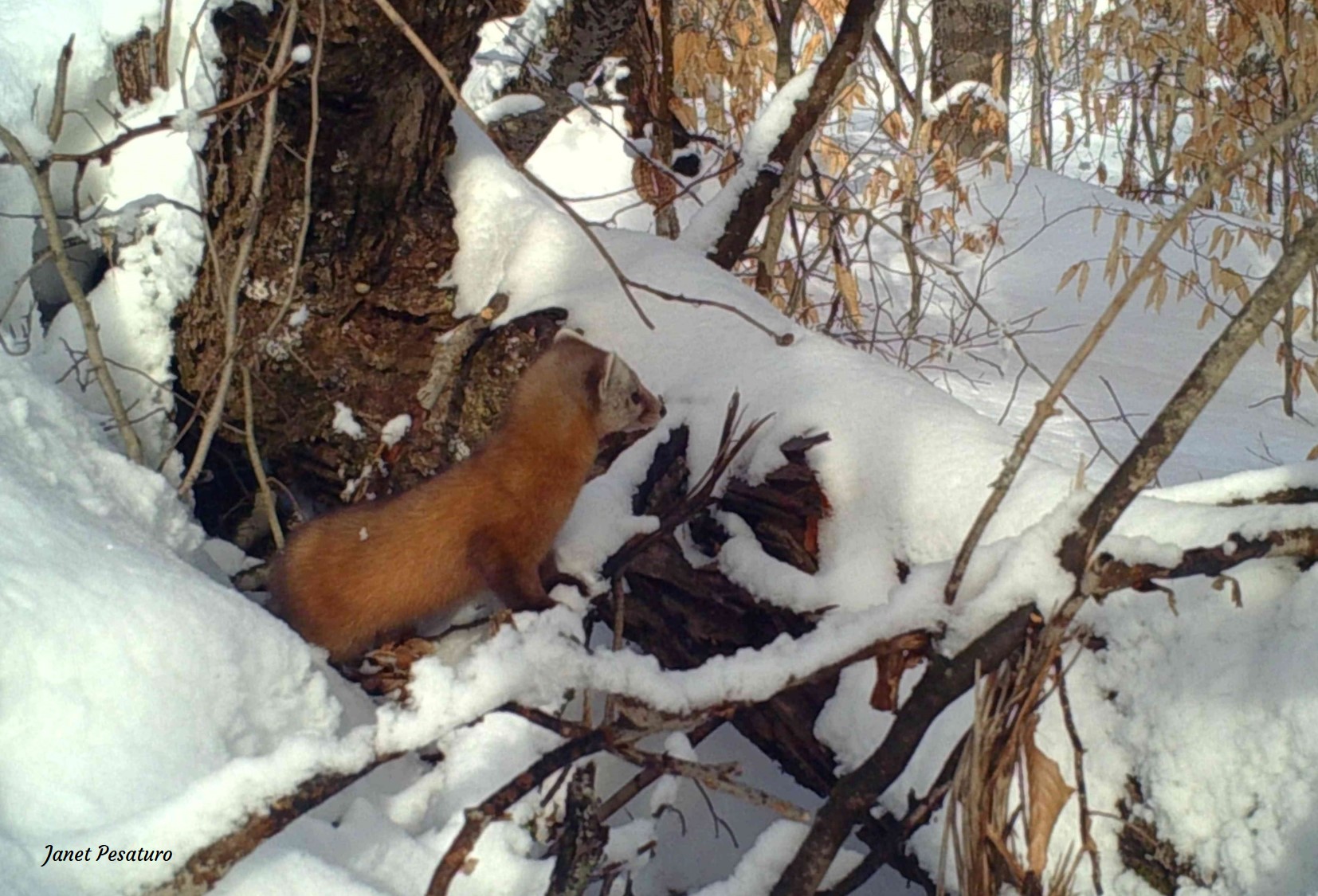
In the next photo the entry to a chamber under a fallen tree in Minnesota is visible. There was a dense network of marten trails in this area, with several going to and from the chamber, so we placed a DSLR camera trap near it and confirmed that a marten was using it. There was no latrine near this den, either.
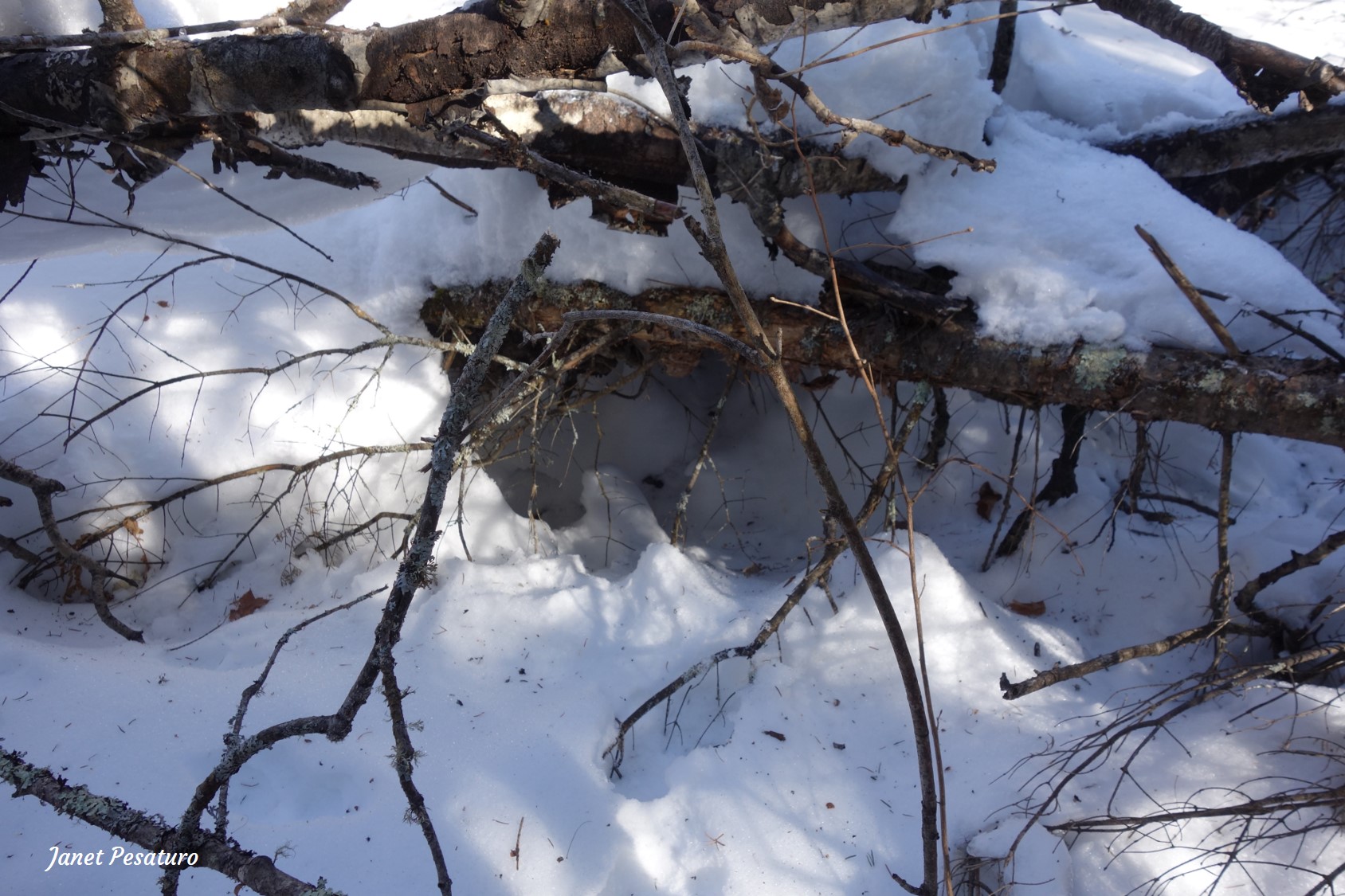
And here is the marten that emerged from under that fallen tree in MN.
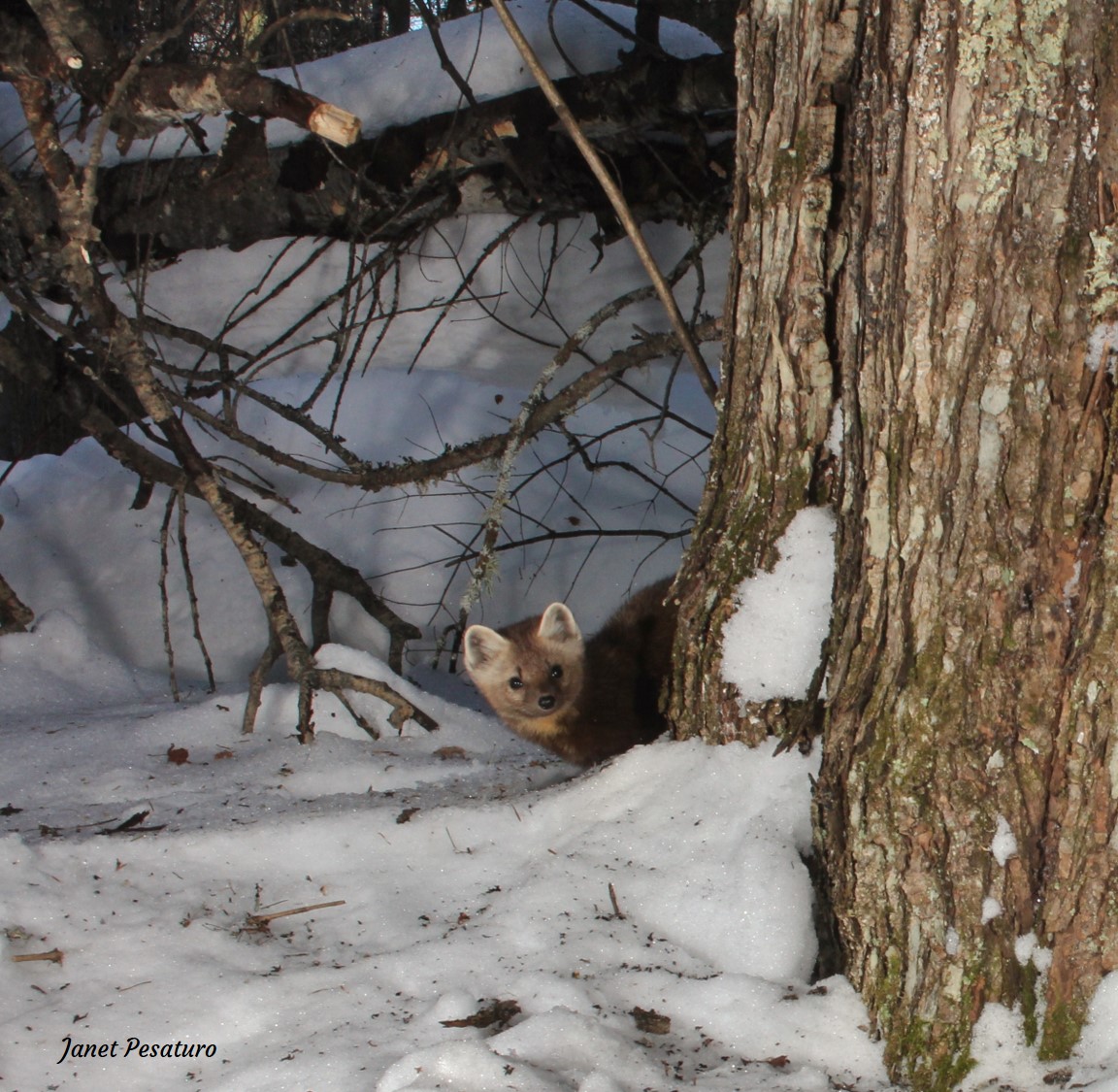
And below, another view of the marten, fully emerged from its den.
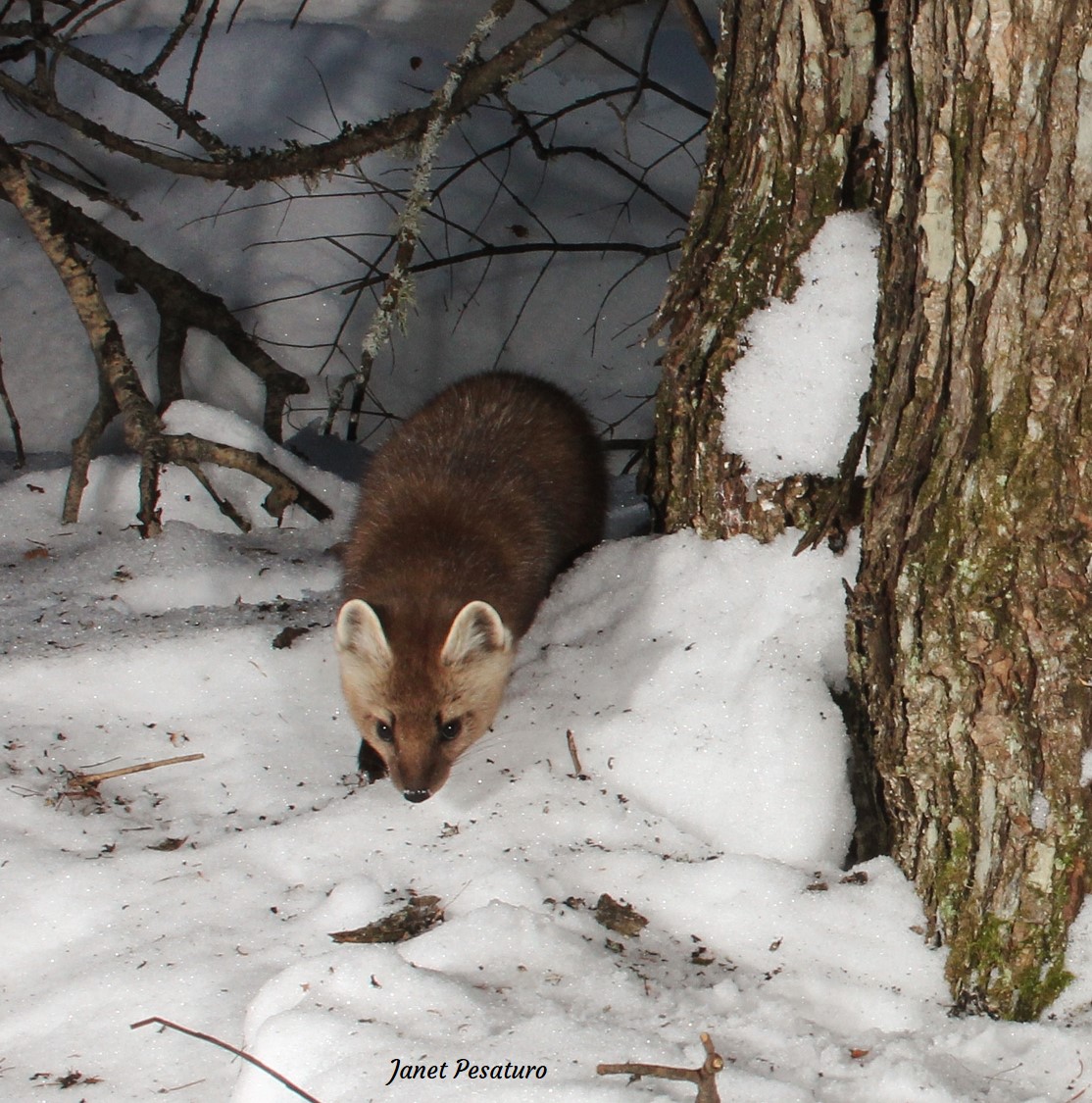
Summer Dens
Warm weather resting and sleeping spots are usually up in trees. Witches brooms, old squirrel nests, and cavities in snags and living trees are often used, but sometimes martens sleep in the open on a large branch.
Breeding Dens
I have yet to find a marten’s breeding den, but according to the literature, pregnant females most often use a cavity in a standing dead or live tree that’s at least 16 inches in diameter. Females usually give birth in early spring, but they begin evaluating cavities for suitability in late winter, so keep that in mind while snow tracking at that time.
Related Posts
Sources
- Characteristics of American Marten Den Sites in Wyoming
- Gilbert, J. H., J. L. Wright, D. J. Lauten and J. R. Probst. “Den and Rest-Site Characteristics of American Marten and Fisher in Northern Wisconsin.” In Martes: Taxonomy, Ecology, Techniques, and Management, edited by G. Proulx, H. N. Bryant, and P. M. Woodward, 135-145. Edmonton: The Provincial Museum of Alberta, 1997.
- Raphael, M. G. and L. C. Jones. “Characteristics of Resting and Denning Sites of American Martens in Central Oregon and Western Washington. In Martes: Taxonomy, Ecology, Techniques, and Management, edited by G. Proulx, H. N. Bryant, and P. M. Woodward, 146-165. Edmonton: The Provincial Museum of Alberta, 1997.

Too bad there aren’t any marten in Missouri – I live in a forest I think they’d really like. Thanks for a great article and some fantastic shots.
Yeah I don’t think they ever ranged that far south. Thanks for your comment – I forgot to mention that they are creatures of northern and high elevation forests, which I just edited in. I’m glad you enjoyed the article!
Excellent read and source of information.
Had you ever considered northern Maine for Martin & Lynn camera trapping?
Jim
Hi Jim, I camera trapped in northern Maine several years ago as part of my field work for the eastern US. I focused more on lynx there. One of my tracker and photography friends had told me that martens were very common in the ADK High Peaks, so I decided to focus on them there. And now, I am doing the field work for the western US, which is what brought me to MN and WY.
Do Martins and Fishers share habitat?
I have read (can’t offer a reference) that snow depth is a factor on which of these species is present. My recollection is that the Martin can do well in deep snow where the Fisher founders.
You do address that somewhat in your book, mentioning that the Martin jumps often rather than walking; and seems to glide over the snow.Have you learned anything since publication that can amplify what you wrote?
Yes, they do share habitat. In my last post, Marten Tracks and Sign (https://winterberrywildlife.ouroneacrefarm.com/2020/04/01/american-marten-tracks-and-sign/), there is a photo showing fisher and marten tracks together. Both species are well adapted to deep snow, with low foot loading, but the marten’s is lower, less than half that of the fisher. My impression, and it’s just an impression based on my time spent tracking them, is that the marten does better at higher elevations where snow is deeper, and the fisher dominates at lower elevations. Both are present in the High Peaks region of the ADKs but the marten is far more common. Elsewhere in NY, the fisher is far more common.
My Siberian husky and myself walked down a significant Hill in northern Wisconsin snowy deep woodlands. Before a few seconds notice, there slid across (almost) a slow to the ground crossing marten.
I comment because it traversed from one hole under the high snows to the other at this sighting. The marten traveled by snow tunnel.
Step with the DNR visitor center told me about their viciousness. She reported the had a captured one in a cage outside on a summer’s night. When they arrived in the morning, the marten was gone. And, the bars of the cage were all blood covered and bent, so she said as and expert that she had never seen any like it. This was approximately 1997.
Yes, they do tunnel into deep snow. I have a photo of marten tracks disappearing into a hole in my post on marten tracks and sign: https://winterberrywildlife.ouroneacrefarm.com/2020/04/01/american-marten-tracks-and-sign/
It’s a shame if someone from the DNR really described them as “vicious”. A wild animal escaping in the manner you describe after being trapped and caged is much more likely acting out of extreme fear and desperation rather than viciousness. Imagine how you would feel if you suddenly found yourself trapped and caged.
‘Step’ in the third paragraph should be ‘A rep’.
got it, thanks.
Martins have killed 15 or more feral cats this spring and I despise their presence on my property. We have more this year than ever. I hear my cats screaming and I am sorrowful of what is happening. I know predication is a normal way of life in the wild and I don’t deny it. This year is atrocious maybe because of the fires the last two years. This year My cats are paying for it.
I’m so sorry for your loss. Martens are indeed effective predators, and I’m glad you accept that.